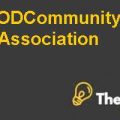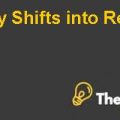
Introduction
The Coca-Cola Company manufactures and market non-alcoholic beverages and it is the largest beverages product company. The company has been operating the business since 1889 when John Pemberton invented the flagship brand of the company ‘Coca-Cola’. The syrups for the beverage products are prepared by the company and then it is sold to bottlers and distributed in various territories.
Triple Bottom Line Analysis
Profit
In order to determine the financial performance of the Coca-Cola Company, it is necessary to evaluate the key financial indicators which has been described below:
Total Debt to Total Equity
The total debt to total equity ratio for the Coca-Cola Company is 111.77, which is considered high and it generally means that the company is aggressive in earning revenues (Marketwatch, 2014).
Operating Margin Return on Invested Capital
The Coca-Cola Company has an Operating margin return on invested capital of 17.19%. A higher percentage is recorded which measures that the company is converting its capital in generating good returns (Marketwatch, 2014).
Enterprise Value to EBTDA
This financial indicator allows to determine the value of the company. The Coca-Cola Company has EV to EBTDA ratio of 15.84 which represents that the company is neither over-valued nor under-valued because the lower value indicates the under-valuation of an organization (Marketwatch, 2014).
Total Assets Turnover
The particular ratio of the Coca-Cola Company is 0.53 which is higher in this case which indicates that the company is able to generate more revenues against its assets (Marketwatch, 2014).
Underperforming or Over performing?
The Coca-Cola Company has been over performing while analyzing the financial data of the key financial indicators of the company. It can be stated that the most important factor of total debt to total equity is very much high. This indicator reflects that the company has less debt to its total equity. A company that has higher owner’s equity than its total debt tends to over perform. Similarly, EV to EBTDA and Total Assets Turnover indicates the same results which reveal that the company has over performed. The ability of a company to generate more revenues against its total assets is also an important indicator in determining the company’s efficiency to earn revenues.
Planet
Environmental impact
The Coca-Cola Company’s environmental impact is based on its sustainable framework which describes its global environment and as well as the company’s long term strategies(see exhibit 1). These are described below:
Market Place
Coca-Cola has always emphasized on providing beverages that are according to the lifestyle of individuals or groups and it reflects the need for every occasion. The focus remains on providing quality that could be trusted by consumers (Coca-Cola Company, 2013). As Coca-Cola Company promotes healthy lifestyle trends for end consumers, upon which the company educates consumers about beverage information, dietary education, information for re-hydration through beverages, and sponsoring sporting events to increase consumers’ healthy lifestyles (Coca-Cola Company, 2013).
Community
The interdependency of the company and the surrounding community lies in its robustness. As a corporate citizen, the company aims to help local communities to satisfy their needs. In return, it increases company’s goodwill.
Workplace
A diverse and an open environment have been provided by the company to its working staff employed at every part of the world. The idea is to allow every individual to display their abilities in a best possible manner.
Environment
The company strives to manage the environmental impact through the reduction of greenhouse gasemissions, which includes Carbon dioxide that results from its production. Due to the innovative technology utilization, it minimizes the use of different natural resources which are used in its packaging to produce sustainable packaging.
Interpretations for the Environmental Impact
While considering the environmental impact of the Coca-Cola Company, it shows net-positive signs because the framework developed by the company addresses every element that is required to enhance future growth and stability. The marketplace highlights the consumers’ environmental impact based on health issue concerns that have arisen in the modern world. Similarly, the company addresses the workplace environment which focuses on diversity. Diverse groups can create better impact because of the different ideas possessed by individuals from different cultural background and a different problem solving approach. A flexible approach for an environmental sensitivity also exists to attract communities and different environmental organizations.
People
Social Impact
The social impact of the Coca-Cola Company depends upon the teamwork, job satisfaction, and leadership in the organization. These factors relating to the company have been described below:
Team Work
In the year 2009, Coca-Cola was ranked 26th company that provides a great workplace for its employees to work. These results were attained due to team effort by forming diverse team groups that belonged to various cultural backgrounds in attaining the same goal outlined by the company (Coca-Cola Company, 2010).........................
This is just a sample partial case solution. Please place the order on the website to order your own originally done case solution.













